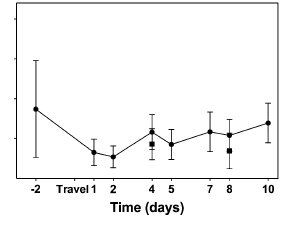THANK YOU FOR VISITING SWEATSCIENCE.COM!
My new Sweat Science columns are being published at www.outsideonline.com/sweatscience. Also check out my new book, THE EXPLORER'S GENE: Why We Seek Big Challenges, New Flavors, and the Blank Spots on the Map, published in March 2025.
- Alex Hutchinson (@sweatscience)
***
Great article by Gina Kolata in the New York Times on the challenges facing sports medicine doctors, and lack of evidence-based medicine that sometimes results:
[…] Patients “see a high-profile athlete and say, ‘I want you to do it exactly the same way their doctor did it,’ ” said Dr. Edward McDevitt, an orthopedist in Arnold, Md., who specializes in sports medicine.
The result is therapies that are unproven, possibly worthless or even harmful. There is surgery, like a popular operation that shaves the hip bone to prevent arthritis, that may not work. There are treatments, like steroid injections for injured tendons or taping a sprained ankle, that can slow the healing process. And there are fads, like one of Ms. Basle’s treatments, P.R.P., that soar in popularity while experts debate whether they help.
All this leads Dr. Andrew Green, a shoulder orthopedist at Brown University, to ask, “Is sports medicine a science, something that really pays attention to evidence? Or is it a boutique industry where you have a product and sell it?”
“For a lot of people it is a boutique business,” he said. “But are you still a doctor if you do that?”
The article focuses on platelet-rich plasma (PRP) therapy, since it’s a perfect example of the hype-before-evidence phenomenon that’s so common in sports medicine. Kolata discusses the mishmash of conflicting evidence, and the reasons the treatment seems plausible. But she also points out the inevitable conflicts of interest from some of the scientists whose evidence is used to support PRP:
They included Dr. Allan Mishra, an orthopedist in private practice in Menlo Park, Calif., who is supported by and gets royalties from one of the P.R.P. equipment makers, Biomet, and is on the board of directors and owns stock in another company, BioParadox, which is exploring the treatment for cardiovascular disease.
Dr. Mishra says more research is needed but offers the treatment for a variety of injuries. His Web page includes a TV news video that claims P.R.P. cured a Stanford football player, James McGillicuddy, with a torn knee tendon. On the program, Dr. Mishra says that, in general, 90 percent of the patients he treats “get better and stay better” after the treatment.
Wow, 90 percent success rate! Too bad he didn’t publish those results, because that’s not what any of the studies say. It sounds more like he “has a product and is selling it” — and unfortunately, that’s all too common with “breakthroughs” in sports medicine and physiotherapy.

 So what’s going on? The researchers believe that it’s not just being cooped up in a plane for a day that causes the problems:
So what’s going on? The researchers believe that it’s not just being cooped up in a plane for a day that causes the problems: It comes from a study called the Copenhagen City Heart Study, which followed a random sample of about 12,000 people in Copenhagen for 21 years. This particular data (which was
It comes from a study called the Copenhagen City Heart Study, which followed a random sample of about 12,000 people in Copenhagen for 21 years. This particular data (which was 